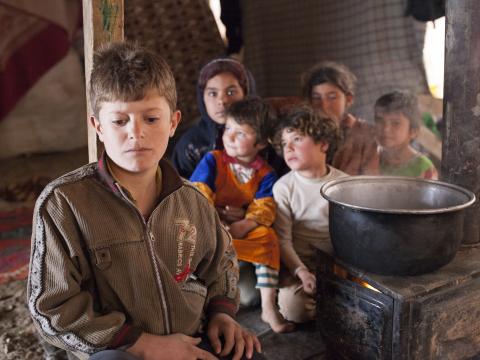Keeping children at the centre of the World Humanitarian Summit

Despite the changing contexts and challenges of humanitarian action in the 22 years that I have been working in the sector, one thing that has remained constant is the devastating impact natural disasters and conflict have on children. Tens of millions of children are affected by disasters today, with more than 30 million living in conflict affected areas. These children are often robbed of their childhood, their rights are violated on a daily basis, they experience incredible loss, and often see no future because of the actions of adults.
It is for this very reason that we at World Vision, through consultations, engagement, and collaboration with our partners leading up to Istanbul, have had one simple goal: to keep children at the centre of the World Humanitarian Summit (WHS).
In Istanbul on May 23rd and 24th over 5,000 world leaders, government officials, UN and civil society representatives and members of affected communities will be considering the changes needed to ensure the humanitarian system is working for children and communities affected by conflict and disaster. They will talk about the changing nature of humanitarian crises, make strong calls for increased partnering and innovation, discuss more effective operational models and hear demands for the elimination of bureaucratic barriers that get in the way of effective multi-year responses. They may even hear about the disillusionment that can easily creep in when faced with over-whelming humanitarian need, lack of political action and blatant violations of international law that we are witnessing today.
But the WHS must not be just a discussion forum; it must also be outcome focused. We must all challenges ourselves to identify and commit to solutions that will have an immediate and sustained impact for children. The recognition of the importance Education in Emergencies in the UNSG’s Agenda for Humanity is a positive step, for example, but all stakeholders must also commit to including critical child protection programmes in their funding calls, commitments and activities.
As part of our commitments World Vision will aim to reach 20% of all affected children when we respond to conflict and natural disasters by prioritising children protection and education in emergencies as life-saving interventions. We will also invest in strengthening protection systems, empowering children and youth as agents of change, furthering research and strengthening the evidence base for the most effective humanitarian interventions that help children. We will also continue to advocate for accountability of violations of international laws designed to protect children.
On May 23rd and 24th I will join World Vision’s delegation, which will be led by WVI President and CEO Kevin Jenkins, at the World Humanitarian Summit. In Istanbul I, along with my colleagues, will take seriously our responsibility as professionals, as humanitarians, as adults to do everything possible to keep the spotlight on children. We must do everything within our individual and collective power to protect and give a brighter future to the next generation.
Read More
Other opinion pieces by this author include Will the WHS be the crucible for change the humanitarian system needs?
Learn more about World Vision's education in emergencies Let Us Learn project in Kurdistan Region of Iraq.
See the results from our five-year study into the effectiveness of Child Friendly Spaces across multiple responses.